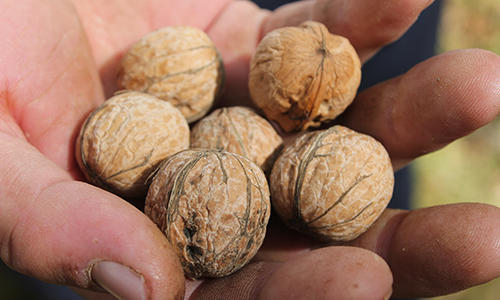Bioversity guidelines part of CBD resources on access and benefit sharing

The Convention on Biological Diversity has included Bioversity International’s Guidelines on access and benefit sharing in research projects in their online toolkit for policymakers and plant genetic resources users.
The access to and use of plant genetic resources is vital for farmers all over the world to adapt to climate change and to make their agricultural systems more productive. International agreements, such as the Nagoya Protocol adopted in 2010 by the Conference of the Parties to the Convention on Biological Diversity (CBD), aim to guarantee that the benefits arising from the use of genetic resources are shared in a fair and equitable way.
The CBD has selected a series of guidelines, policies and other tools to help countries and policymakers to implement the access and benefit-sharing provisions of the Nagoya Protocol. A Bioversity International publication – Guidelines: Access and benefit sharing in research projects – is part of the resources recommended by the CBD. The guidelines are one of the outcomes of an initiative supported by UNEP-GEF and coordinated by Bioversity International that looked at the conservation and use of horticultural crops and wild fruit species in Central Asia.
The initiative has provided options to policymakers for strengthening legal and policy frameworks in light of the Convention on Biological Diversity, the Nagoya Protocol and the International Treaty on Plant Genetic Resources for Food and Agriculture. “In particular, we worked with national partners in Kazakhstan, Kyrgyzstan, Tajikistan, Turkmenistan and Uzbekistan to address the need to reinforce conservation of crop wild relatives of the fruit crop species, to protect farmers’ rights, and to explore ways through which the benefits derived from the use of genetic resources can be shared with the farmers that conserve them in situ,” says Bioversity scientist and project coordinator Muhabbat Turdieva.
The guidelines describe the type of agreements that can be used in different contexts and the most relevant provisions to be included in such agreements. They also provide models of agreements that can be adapted to particular situations. Their primary audience are scientists working with crop genetic resources and related traditional knowledge in research organizations, but they can also be useful for authorities involved in legislative processes on the matter, and for local populations who participate in research and development projects dealing with the conservation and use of agricultural biodiversity.
Download Guidelines: Access and benefit sharing in research projects
Access the  CBD online resources on access and benefit sharing
CBD online resources on access and benefit sharing
